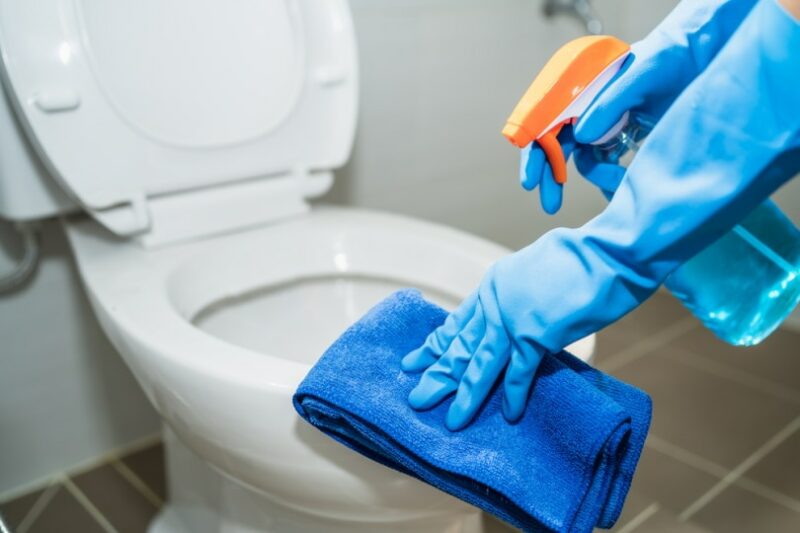Can I Use CLR in a Toilet? Pros, Cons & Maintenance Tips
-
Ed Malaker
- Last updated:

Many people can develop rust stains in their toilets, and hard water can create a minor buildup that can prevent your toilet from functioning correctly, causing many people to wonder if it’s safe to use CLR to help keep it clean. Fortunately, CLR works well on toilet bowls, but keep reading as we explore the pros and cons of choosing it over another option to help you make an informed decision.
What Is CLR?
CLR stands for calcium, lime, and rust, the three main items it can dissolve and break up via several mild acids. It’s safe to use on stainless steel, chrome, glass, porcelain, and more, and many people use it to remove hard water deposits from bathtubs, shower heads, sinks, washing machines, dishwashers, toilets, and many other items.
Is CLR Dangerous?
You should dilute CLR with equal parts water before using it, as CLR contains many different weak acids that can irritate and even burn the skin on contact. Always wear protective vinyl or rubber when using it. We also recommend using protective eyewear if you use CLR to clean a surface higher than your chest, as drips can end up in the eyes.
Can I Use CLR in a Toilet?
Yes. CLR works to remove rust stains in the back of the toilet or in the bowl. It can also eliminate calcium deposits that occur due to hard water and help deodorize your toilet by cleaning the drainage pipes. Use CLR in your toilet bowl when you notice extensive staining or mineral buildup.
When Should I Avoid Using CLR in a Toilet?
Since CLR can be more expensive than other cleaners and the acids that it contains can irritate the skin, it’s often a good idea to choose another option if the mineral buildup is minimal. For instance, vinegar works especially well at breaking up minerals, so you can use that to remove stains if they are fairly light. You should also avoid mixing the CLR with other chemicals that you might use to clean the toilet. Mixing chemicals can produce harmful gases that are dangerous to your health.

How Do I Clean My Toilet With CLR?
- Turn off the water supply to your toilet, and flush it so all the water drains out. If water remains at the bottom of the tank, use a scooper or towel to remove it.
- Use a scrub brush and a sponge to clean and wipe down the tank as best you can.
- Put on a mask, rubber gloves, and eye protection before opening the CLR and applying it liberally to the sides and bottom of the tank.
- Add CLR to rusted components in the tank, like the flapper chain.
- Allow the CLR to sit for 2 minutes before scrubbing the tank with your scrub brush while wearing your protective equipment.
- If there are stains in the toilet bowl, repeat the previous two steps to clean those too.
- Turn the water back on and let the tank fill with water.
- Flush the toilet a few times to rinse away the CLR, leaving behind a clean tank.

Use CLR for Tank Maintenance
- Add 2 cups of CLR to your full tank, and let it sit for several minutes before flushing.
- Repeat every 3–4 months to help reduce mineral buildup and staining between cleanings.
Summary
CLR works well in the toilet and is perfectly safe if you wear gloves, a mask, and protective eyewear, as it contains many kinds of acids that can irritate the skin. Drain the water out of the toilet before using the CLR to make it easier to use, then apply it, and let it sit for 2 minutes before scrubbing it down again. Turn the water supply back on to fill the toilet so you can flush it to rinse away the CLR, and you are finished. Add a little CLR to the tank every 3–4 months to help reduce mineral buildup between deep cleanings, and avoid using it with other cleaning supplies so you don’t create harmful vapors.
Featured Image Credit: Gumbariya, Shutterstock
Contents
